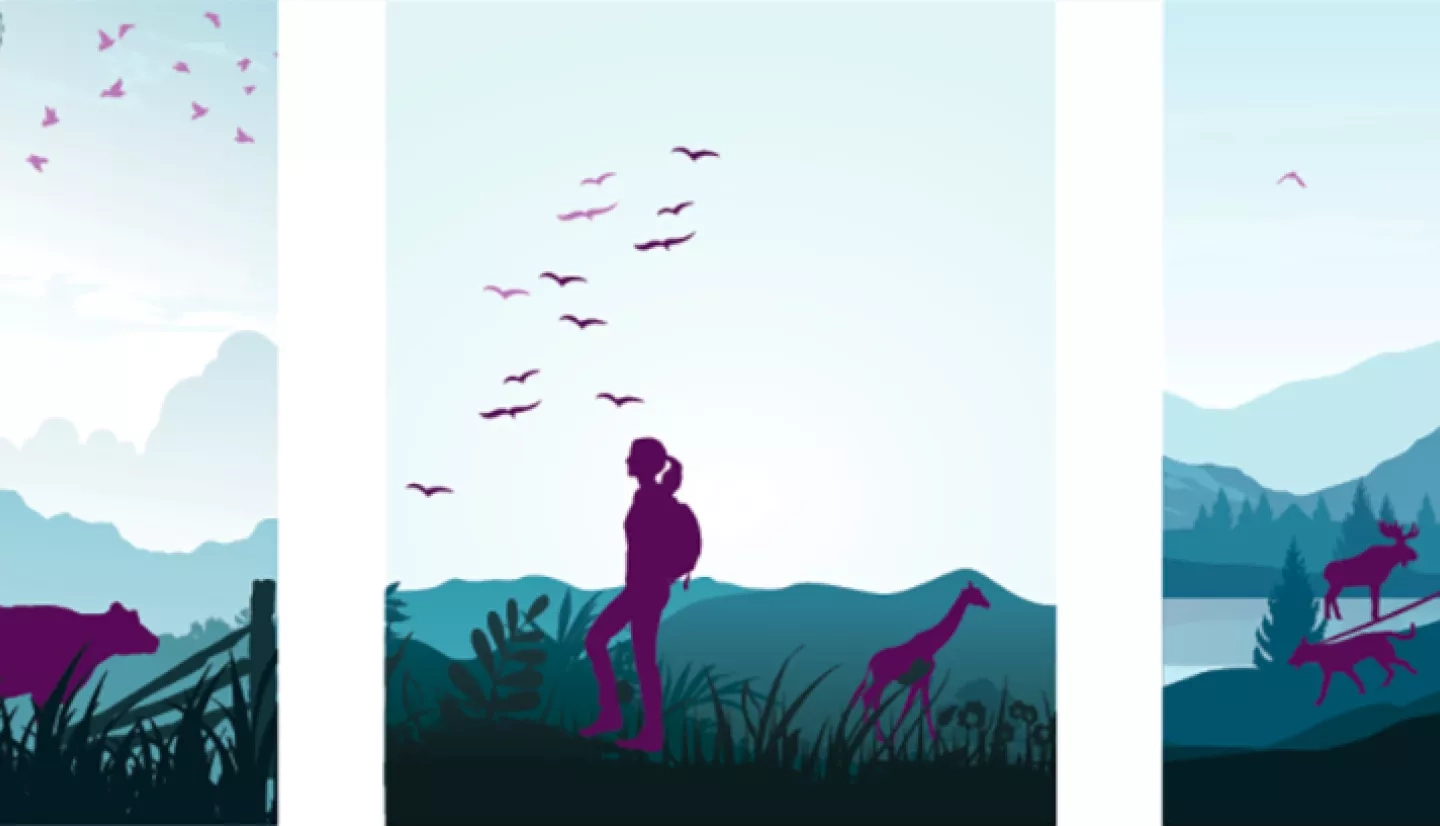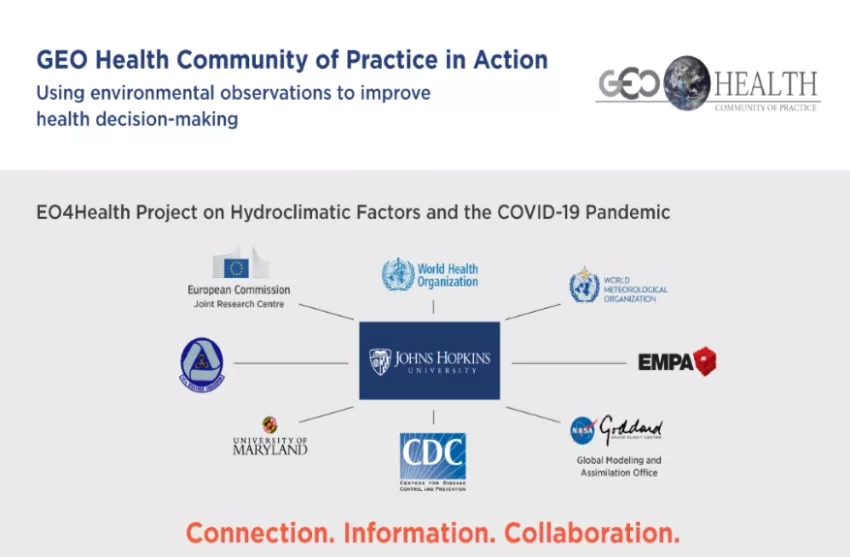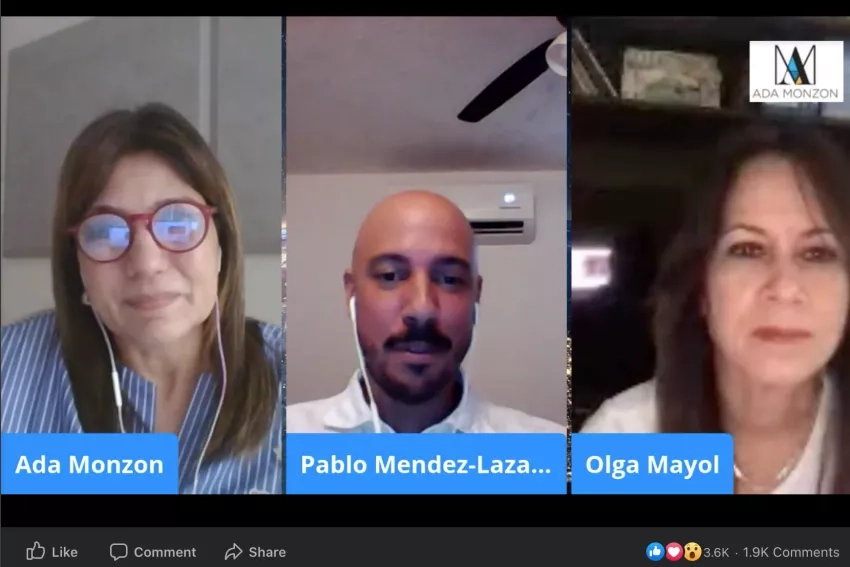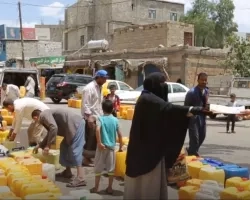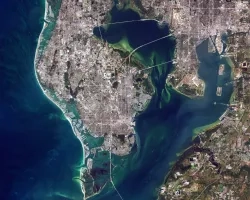The public health community highlights the concept of One Health each year on November 3, calling attention to this collaborative, transdisciplinary approach to address health threats shared by humans, animals and the environment. Using the One Health concept framework, NASA’s Earth Applied Sciences Program supports cutting-edge scientific research that uses Earth observation data to examine real-time community health challenges.
“NASA has a unique role to play in the concept of One Health, particularly during the COVID-19 pandemic,” said John Haynes, program manager of NASA’s Health and Air Quality program area. “As we continue to collect Earth-observing satellite data on a global scale, we can aid in the understanding of how changes in the Earth system impact human, animal and environmental health.”
For One Health Day 2020 — an international initiative coordinated by the One Health Commission, the One Health Initiative and the One Health Platform — we spotlight NASA’s role in promoting the use of Earth-observing satellite data for societal benefit in the time of COVID-19. While NASA Earth scientists are not studying the virus itself, this year’s response to the pandemic has demonstrated the importance of this collaborative, transdisciplinary approach to address public health concerns.
“By incorporating the One Health concept in their research applications, scientists and community stakeholders can develop innovative designs and approaches — using a holistic lens — to examine how variation in the aquatic, atmospheric and terrestrial ecosystems may impact human and animal health,” said Helena Chapman, associate program manager of NASA’s Health and Air Quality program area.
At the beginning of the COVID-19 pandemic, the GEO Health Community of Practice (CoP) connected public health researchers worldwide. The CoP is an activity of the Group on Earth Observations (GEO), which is a global network connecting government agencies, academic centers and research institutions, data providers, businesses, engineers, scientists and experts who use Earth observations to create innovative solutions toward an array of global challenges.
"The GEO Health Community of Practice launched into action at the start of the pandemic,” said Haynes, who also serves as a co-chair on the GEO Health CoP. “It has provided a platform for members worldwide to share research, applications and related activities that use Earth observations to advance knowledge on COVID-19 transmission and impacts.”
The CoP has integrated the One Health concept as a framework to build innovative research applications. As a global network of governments, organizations and observers, the CoP connects Earth and health science communities around the world to improve health decision-making activities and encourages timely scientific and community collaborations. This community connects scientists with diverse subject matter experts in order to conduct their research in a timely manner.
Below are three of NASA’s COVID-19 public health projects that fit the One Health concept in real-time community applications. These applied projects demonstrate that multidisciplinary collaborations with scientists and community stakeholders are fundamental to advance our understanding of environmental factors that may influence the community spread of COVID-19 or assess the potential impact of exposure on health and society.
Project 1: Understanding the Spread of Infectious Diseases When the Seasons Change
Ben Zaitchik, a climate scientist at Johns Hopkins University in Baltimore, Md., is investigating whether environmental factors affect the spread of COVID-19. This builds on his NASA-funded work studying the spread of infectious gastrointestinal diseases — such as rotavirus and Shigella spp. — and possible associations with variations in weather and climate factors.
Zaitchik’s team uses several NASA instruments that collect hydroclimatic data which can influence the spread of some environmental pathogens. Environmental observations include temperature data from the Moderate Resolution Imaging Spectroradiometer (MODIS) aboard NASA’s Terra and Aqua satellites, soil moisture data from the Soil Moisture Active Passive (SMAP) satellite, precipitation data from the Global Precipitation Measurement (GPM) mission and meteorological data from the Modern-Era Retrospective analysis for Research and Applications, Version 2 (MERRA-2).
Zaitchik and his team leverage the COVID-19 dashboard created by the Johns Hopkins University’s Center for Systems Science and Engineering. Using data from the dashboard, they hope to develop a platform to perform in-depth analyses that examine associations between environmental and epidemiological data. Understanding the possible role of environmental parameters on COVID-19 transmission can provide insight for future public health responses and decision-making activities related to disease risk monitoring, prediction and prevention and control measures.
Earth’s seasons bring pulses of green and white as regions of vegetation, snow, and ice expand and contract throughout the year. Seasonal changes have been shown to influence the spread of some diseases. Credits: NASA Earth Observatory image by Joshua Stevens, using Blue Marble data.
Project 2: Studying the Inconsistent Effects of COVID-19 Social Distancing on Air Quality in Global Cities
Susan Anenberg and Dan Goldberg, of George Washington University's Milken Institute School of Public Health, received a one-year grant from NASA to study satellite data and estimate the amount of air pollution following worldwide COVID-19 shutdowns and the reduction of passenger vehicles on the roads. This work builds upon their current NASA-funded grant to develop an urban-scale health impact assessment tool. The goal of this tool is to fill a critical gap for the U.S. and international organizations to improve quantitative assessments of air pollution health impacts and mitigation benefits in cities.
Goldberg, in AGU Geophysical Research Letters, reported initial analyses of nitrogen dioxide (NO2) in urban areas. The team found that the decrease in NO2 concentrations across cities globally during their lockdown periods have been inconsistent, reflecting the impact of meteorological variability. In addition, Anenberg, Goldberg and their team found that minority communities experienced the largest decrease in NO2 concentrations. However, despite NO2 decreases in these communities, COVID-19 shutdowns did not eliminate disparities by race.
"Since air pollution may be a risk factor for increased severity of COVID-19 outcomes, accurate information about air pollution levels during the COVID-19 crisis is critical to protect public health," Anenberg said. "Our project will also improve public health in the long-term by advancing our understanding of how transportation policies can be designed to improve air quality most effectively and efficiently."
Project 3: Connecting Air Quality to the Health Effects of COVID-19
Pablo Méndez-Lázaro, a professor at the University of Puerto Rico Medical Sciences Campus in San Juan, is investigating how environmental factors may affect the spread of the COVID-19 virus. Supported by NASA’s Health and Air Quality Applications program area, Méndez-Lázaro and his team have developed an air quality warning system that provides three days of advance public notice about potentially harmful dust plumes that travel to the island from the Sahara Desert.
"Being able to see this dust before it arrives is a critical tool for public health," said Méndez-Lázaro. “We alerted federal and state agencies as well as medical doctors, which gave them time to alert the public and vulnerable populations like people with asthma. Before, decision-makers lacked the specific information to help the public protect themselves in advance."
Their system incorporates data from local air monitors with data from NASA's MODIS satellite instrument, the Visible Infrared Imaging Radiometer Suite (VIIRS) aboard the joint NASA/NOAA Suomi National Polar-orbiting Partnership (Suomi NPP) satellite, and the Goddard Earth Observing System Model (GEOS-5), in partnership with 19 public, private and academic institutions in the Caribbean basin. Their team is now exploring if seasonal African dust that travels to the area between May and August every year will have significant impacts on the individual susceptibility of infection or risk of mortality associated with the coronavirus.
As part of his outreach efforts for this project, Méndez-Lázaro joined local meteorologist Ada Monzón for a Facebook Live broadcast that reached about 374,000 people during the severe Saharan dust event of June 2020. His team also worked with the National Weather Service - San Juan Office on another broadcast which explained the hazardous conditions while providing recommendations and preparedness measures the public could take to protect themselves.
Although November 3 marks an annual day to recognize One Health, these projects demonstrate that this concept can be applied 365 days of the year — resulting in better decision-making to address emerging health threats shared by humans, animals and our environment.
